Art Fairs
The 10 Most Extraordinary Artworks at Art Basel Unlimited 2017
Here are the standout pieces in this year's edition of the gargantuan art exhibition, curated once again by Gianni Jetzer.
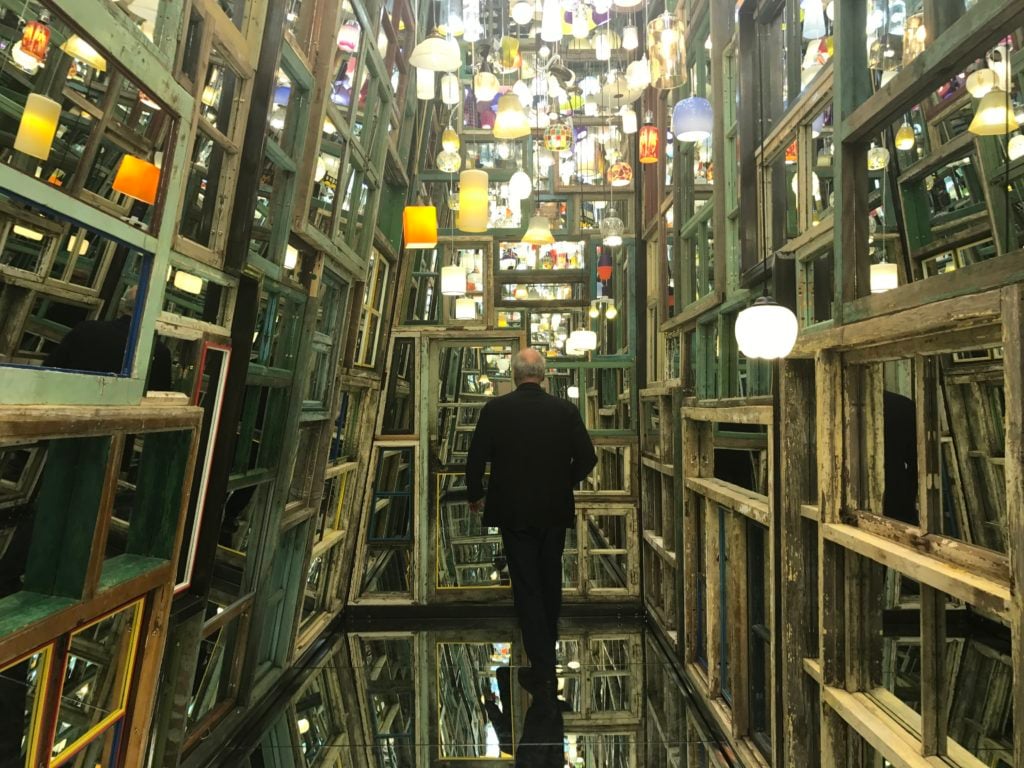
Here are the standout pieces in this year's edition of the gargantuan art exhibition, curated once again by Gianni Jetzer.

Andrew Goldstein &
Julia Halperin

With its colossal artworks, gleaming astonishments, and elegantly dressed dealers guarding darkened grottos of digital delight (i.e. screening rooms), Art Basel’s Unlimited section resembles nothing so much as Aladdin’s Cave of Wonder, where treasures pile upon treasures to overwhelming effect. This year, artnet News’ Julia Halperin and Andrew Goldstein explored the massive trove, seeking out the artistic lamps that, when inspected, yield the greatest payoffs.
JONATHAN HOROWITZ
Self-Portraits in ‘Mirror #16 (24″ diameter)’ (2015/2016)
Gavin Brown’s Enterprise
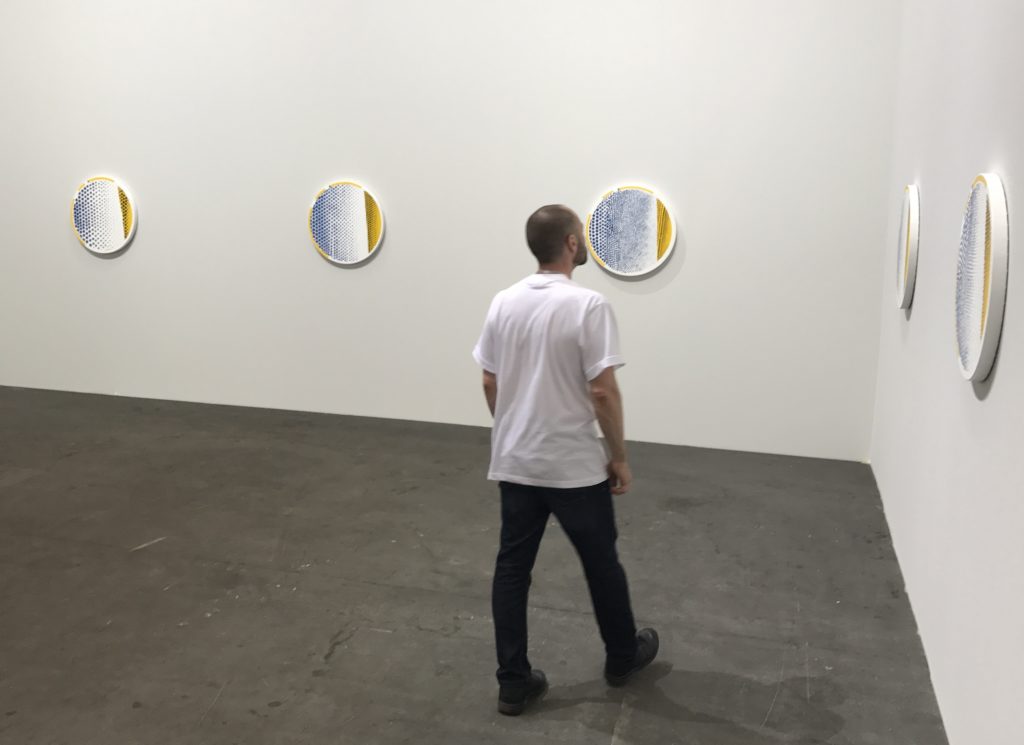
Appropriation has by now become such an established aesthetic sub-industry in contemporary art that a roomful of copied Lichtenstein mirror paintings can seem snooze-worthy, but the conceptual artist Jonathan Horowitz—known most recently for his essential Trump-golfing-amid-the-apocalypse photo—has a nifty agenda behind this installation. Distributing an image of one Lichtenstein that he found on the web, Horowitz enlisted different artists in the New York area to reprise the painting by hand, using only paints and a brush and no digital tools. The result, as you can see in these 13 paintings, is that each version is subtly different (or not so subtly, in the case of one that goes a little crazy with the dots), acting as a mirror of sorts of each artist’s indexical hand. Bad news for anyone thinking this could be a bonanza for cheap Lichtensteins: the series is only for sale as a set, at $350,000.
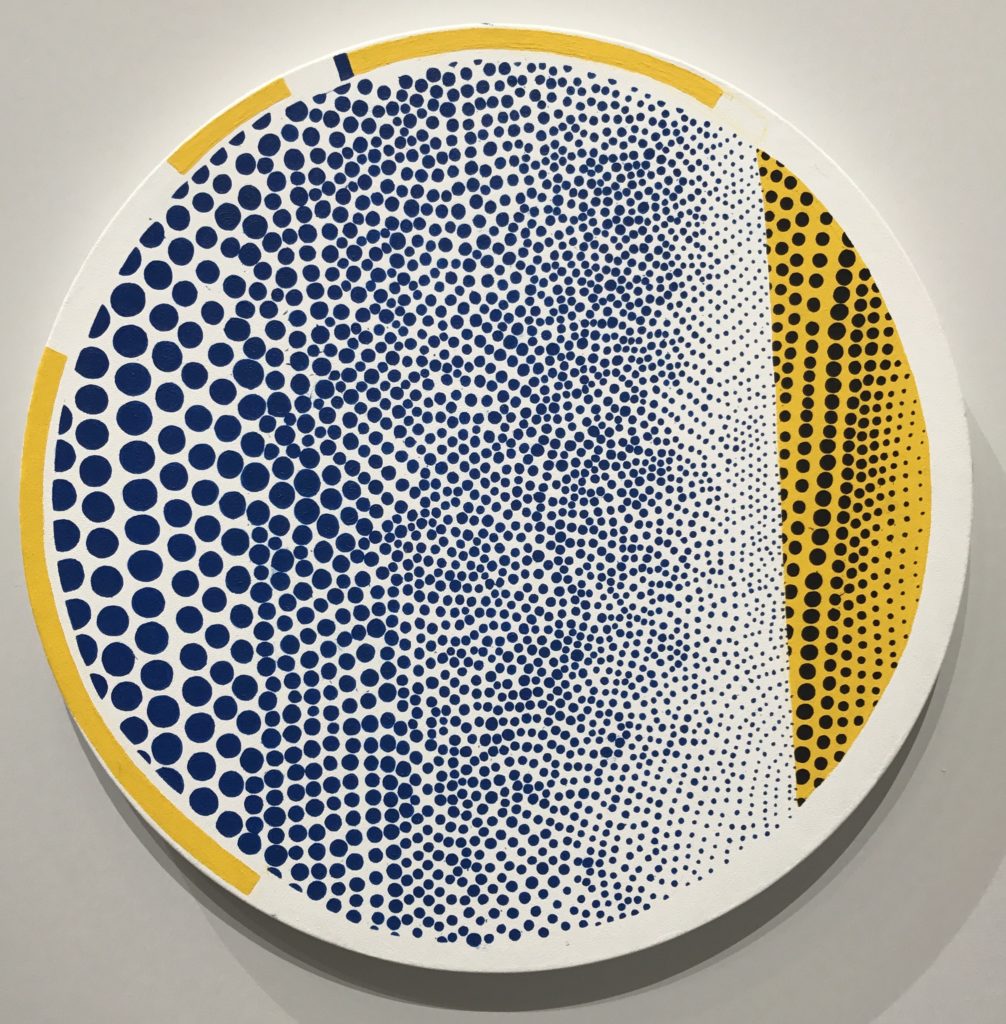
CHRIS BURDEN
Ode to Santos Dumont (2015)
Gagosian Gallery
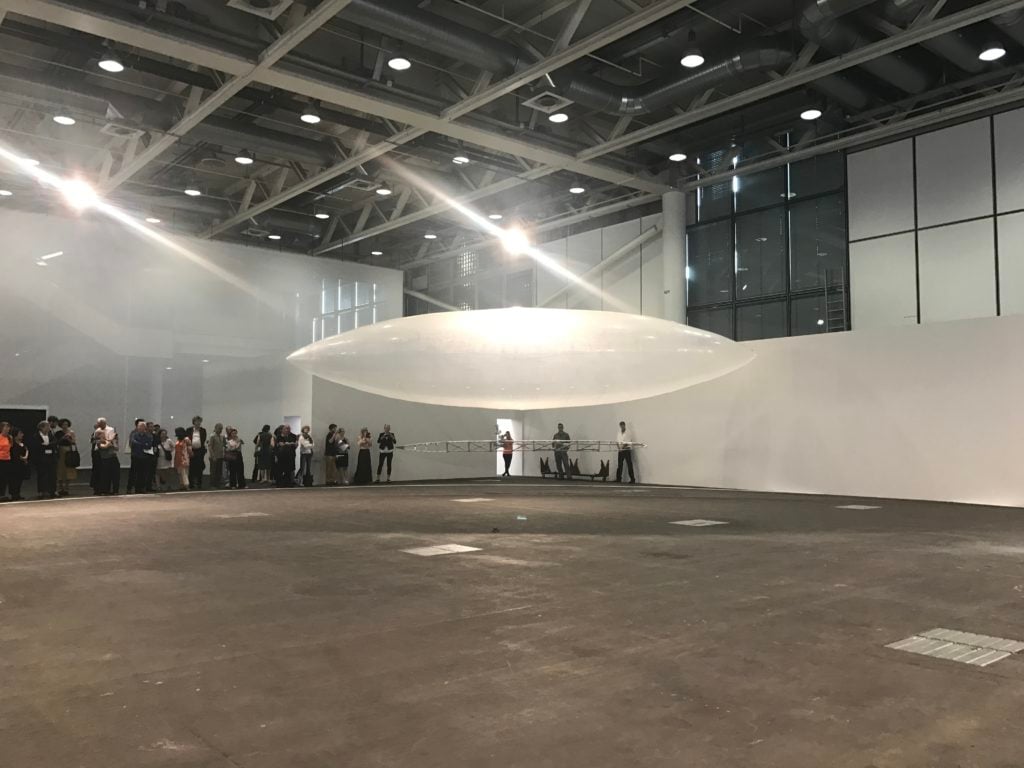
The Los Angeles artist Chris Burden’s final finished artwork floats through Unlimited’s cavernous exhibition hall in a 60-degree circle like an elegant UFO on an invisible leash. The work, which took the late artist a decade to produce, is inspired by the little-known Brazilian aviation pioneer Alberto Santos Dumont. His pioneering dirigible successfully flew around the Eiffel Tower in 1901. Burden’s own feat of engineering has been seen by the public only once before, at the Los Angeles County Museum of Art in 2015. But if you want to see it in motion in Basel, you’ll have to be patient: The work’s antique motor can only run for 15 minutes at a time without overheating, and it takes an additional two and a half hours to cool down.
JOHN AKOMFRAH
The Airport (2016)
Lisson Gallery
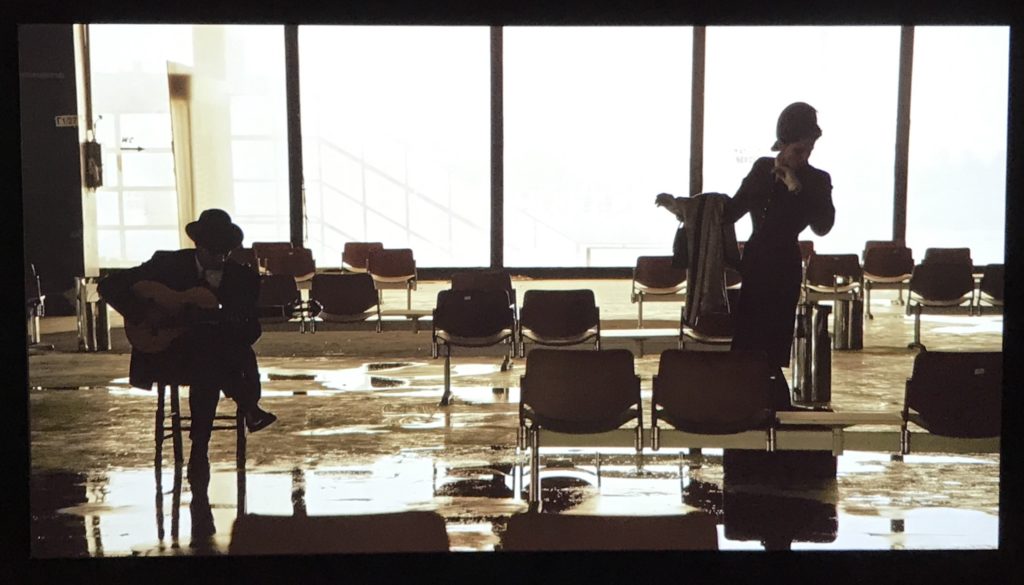
Taking its cues from the time-traveling narrative of Stanley Kubrik’s 2001: A Space Odyssey and the work of the late Greek filmmaker Theo Angelopoulos, who was known for his languorous tracking shots, this mesmerizingly romantic three-channel film by the Ghanaian artist John Akomfrah tells a story of love and loss: an aging guitarist relives his affair with a woman in red, watching his younger self serenade her in now-desolate places in Athens (abandoned airports, gas stations, buildings) and then becoming separated from her for reasons that might involve politics (we hear chants of street protests at points) and the Piraeus, the ancient port the protagonist keeps returning to. (Akomfrah, whose earlier films have treated the slave trade and the whaling industry, views the ocean as a vast watery grave.) Filmed exclusively with Greek crew members and featuring a soundtrack by the artist himself, this absorbing work—which an accompanying text explains as “a meditation on the history of Greece and its recent financial crisis”—can be seen as a mini-documenta in and of itself, and a satisfying one.
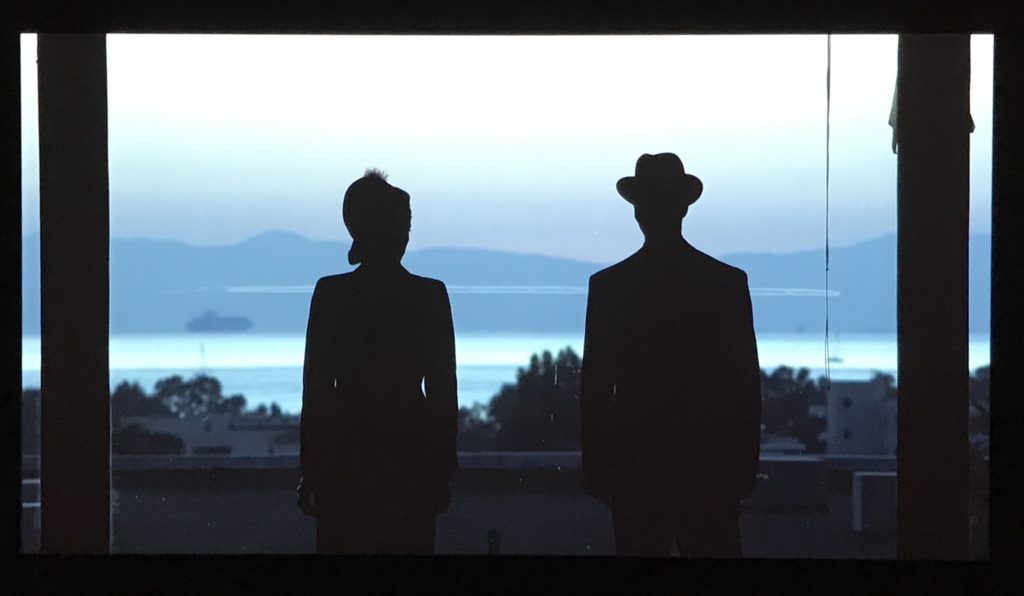
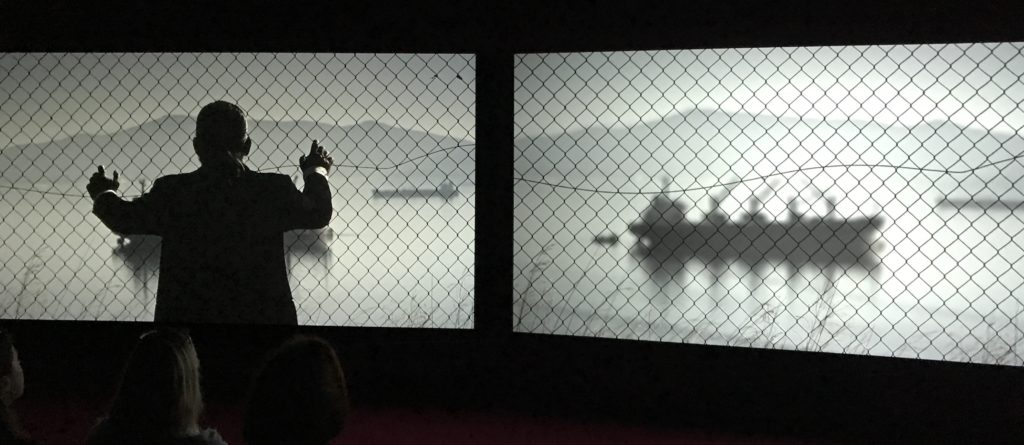
JOHN BALDESSARI
Ear Sofa; Nose Sconces with Flowers (in Stage Setting) (2009/2017)
Marian Goodman Gallery and Sprüth Magers
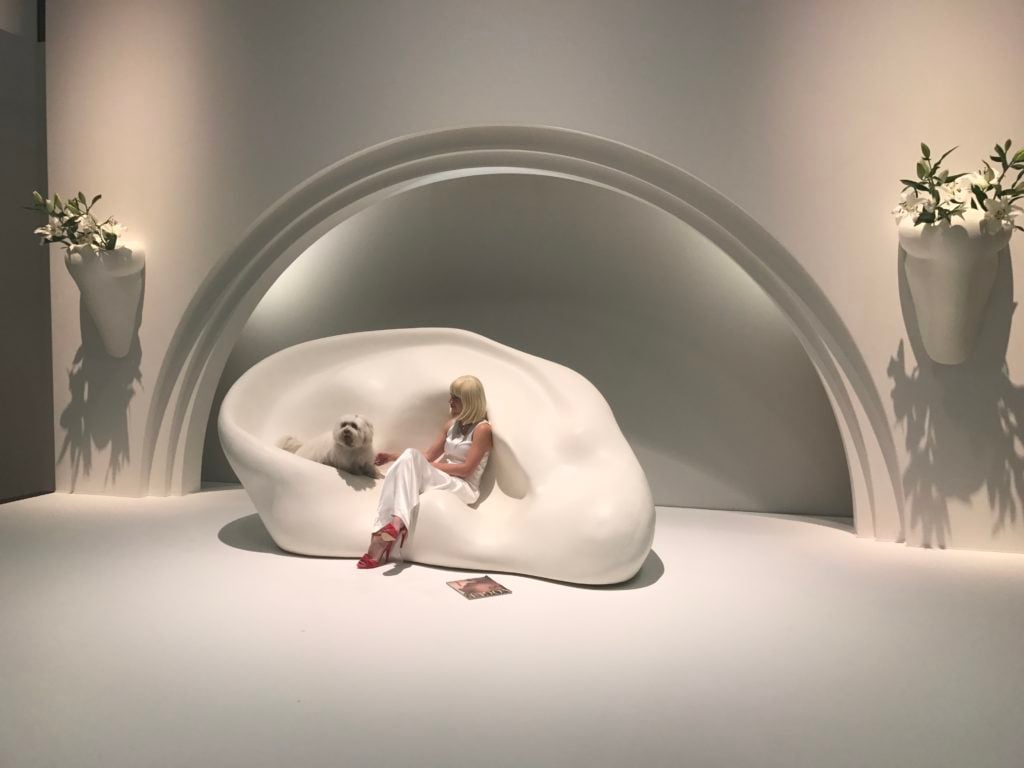
Baldessari’s installation is part Salvador Dali dream sequence, part Art Deco tableau vivant. Look closely, and you’ll see some familiar shapes: the model and her pup are sitting on a sideways, oversized ear, while the white scones on the wall are, in fact, upturned noses. The installation, which takes Baldessari’s fascination with faces to an extreme, debuted at Sprüth Magers in London in 2009. At Unlimited’s VIP preview, the pooch was a Coton de Tuléar named Goliath who is an Art Basel veteran. Five years ago at the fair, “he posed on a Persian carpet for a work about life and death,” one of Goliath’s trainers told artnet News. (Further research revealed that work to be Nina Beier’s 2011 Tragedy.) Goliath, who recently completed a star turn in a commercial for the Swiss banking system, and another dog will rotate in and out of the installation throughout the fair’s run.
BORIS MIKHAILOV
Yesterday’s Sandwich (1960s-1970s)
Sprovieri
Known for his simultaneously lyrical and unsparing images of life in Soviet Russia, the Ukrainian photographer Boris Mikhailov was long forbidden from exhibiting his work, including this early series of composite photographs that he created through darkroom ingenuity (it was the pre-distal era, after all). Featuring images of women in various stages of undress, deli meats, and slumped bureaucrats, the series conjures the tamped-down creative exuberance of another time, when such mildly idiosyncratic expressions could be seen as a threat to the established social order—as, surely, in a small way, they were.
ADRIAN PIPER
Food for the Spirit (1971–1997)
Lévy Gorvy
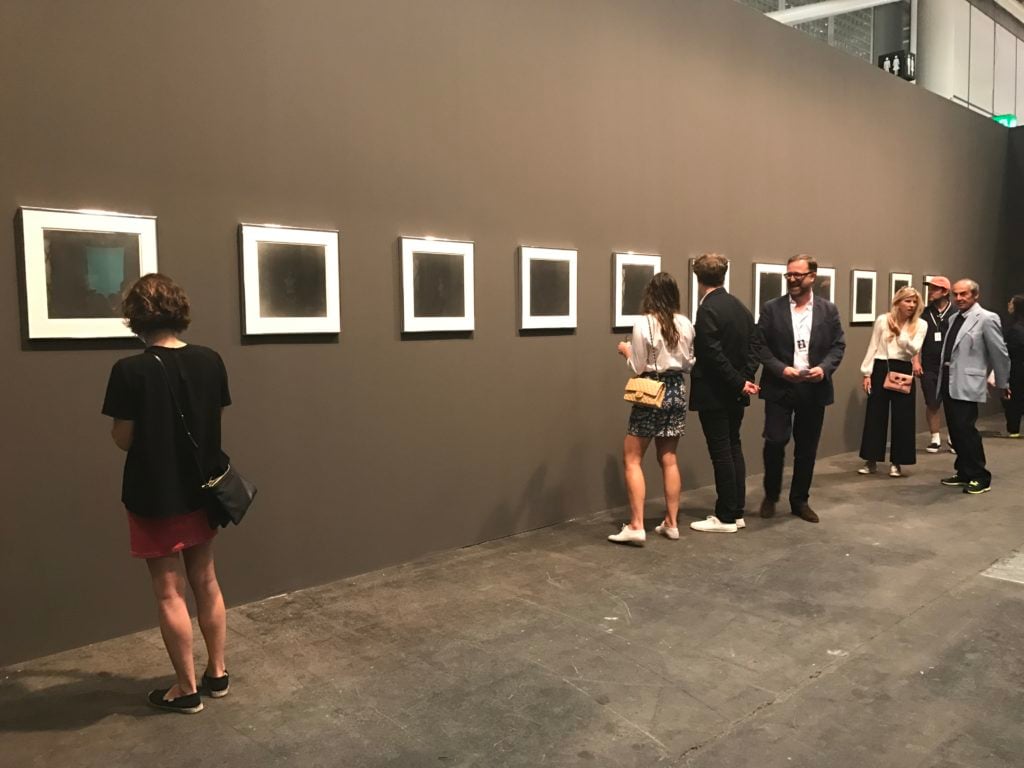
Most of the time, it’s hard not to roll your eyes when a dealer says that a work at an art fair is “museum quality.” But in this case, the description is legitimate. Adrian Piper’s Food for the Spirit is a landmark in the history of conceptual art. The artist created the work in the summer of 1971, when she sequestered herself in her New York loft and immersed herself in perhaps the most difficult work of philosophy ever written: Immanuel Kant’s Critique of Pure Reason. As time passed, she felt as if she were disappearing into the work, and took a portraits of herself reciting passages from the book as a testament to her own existence. The images—in which she can be seen getting thinner and thinner as the summer goes on—were originally included in an artist’s book in 1971; only in 1997 did Piper print the photographs as gelatin silver prints. Editions of the prints were quickly snapped up by New York’s Museum of Modern Art, the Whitney Museum of American Art, and the Serralves Museum in Porto. The only version to remain in private hands is the first, which also comes with the original book and is priced at $2.5 million. Whoever buys it will have to be willing to lend the book to Piper’s forthcoming MoMA retrospective.
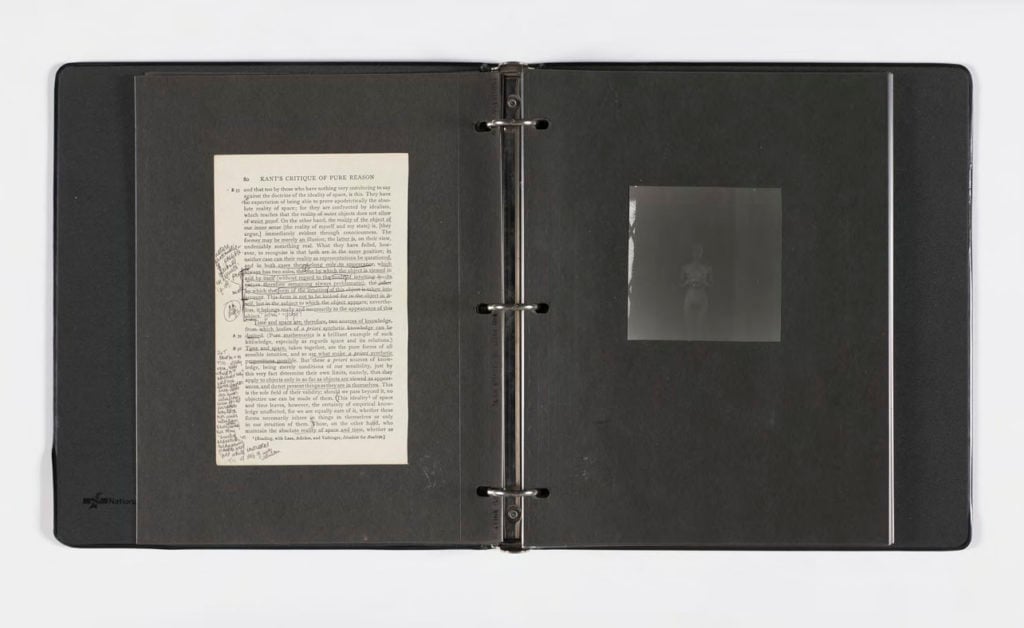
Adrian Piper’s Food for the Spirit (detail) (1971). 14 silver gelatin prints; notebook containing 14 vintage prints, pages torn from Kant’s Critique of Pure Reason with handwritten annotations. Courtesy of Lévy Gorvy.
PHILIPPE PARRENO
Fraught Times: For Eleven Months of the Year It’s an Artwork and in December It’s Christmas (July) (2017)
Pilar Corrias
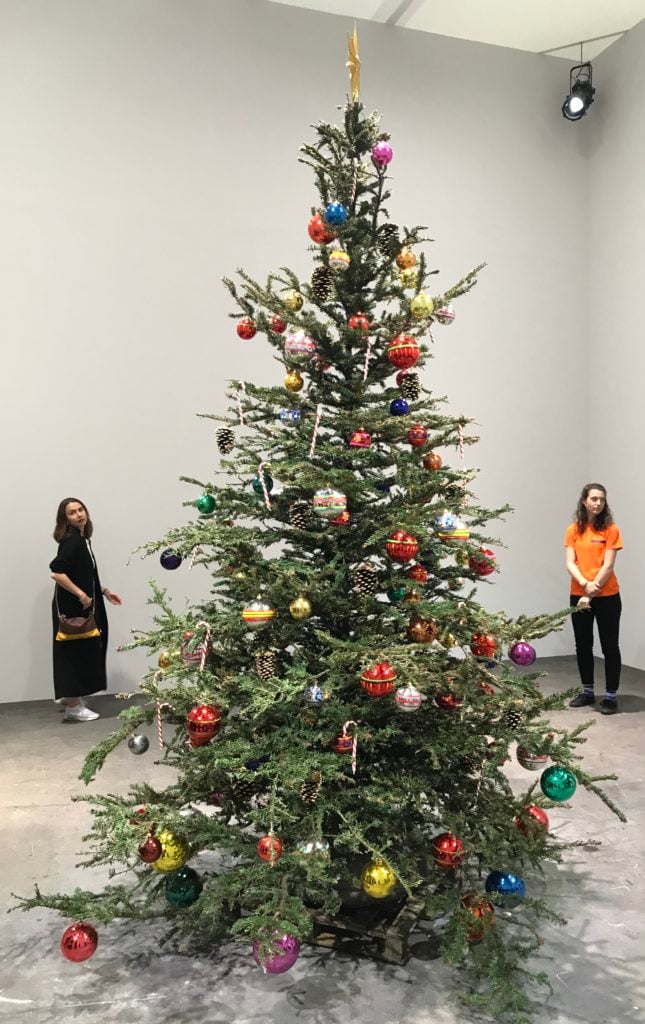
A funny joke taken to extreme lengths, this stainless-steel Christmas tree is the latest in a series that Philippe Parreno began making in 2008, with one made for each of the 11 months of the year in which the baby Jesus wasn’t born. Also funny? The tree costs €1.5 million.
STAN VANDERBEEK
Movie Mural (1965–1968)
The Box
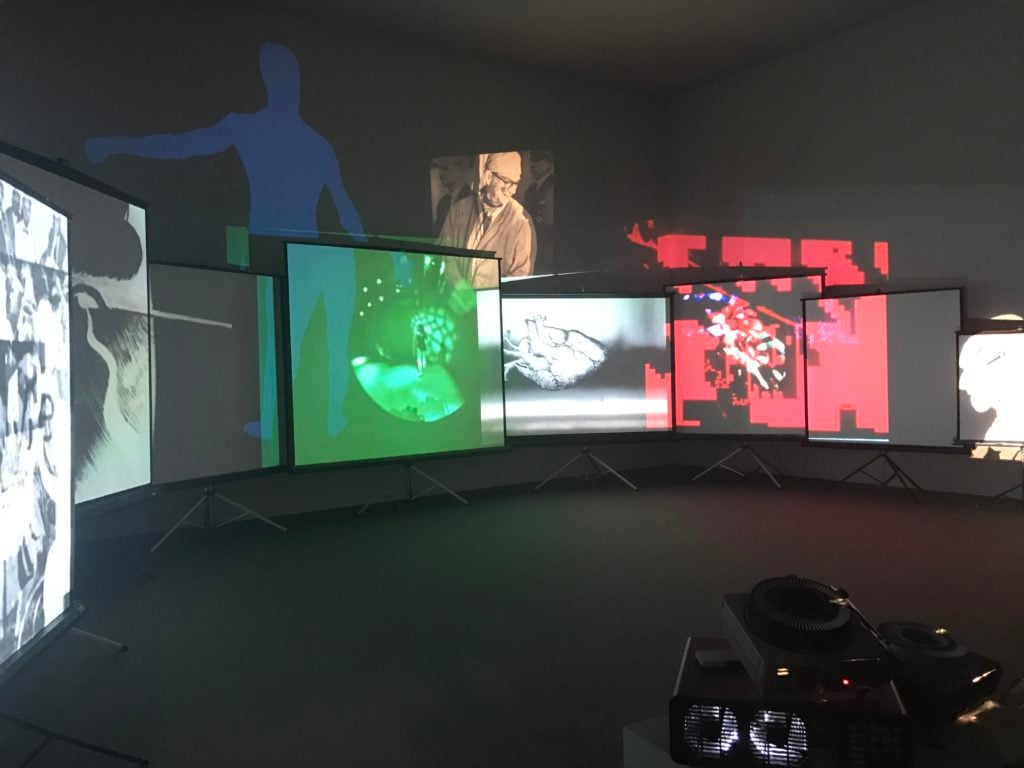
Stan VanDerBeek is an artist who hasn’t quite gotten his due, and his room-size multimedia installation at Unlimited serves as an important reminder of just how much he did first. The US artist—a pioneer of what would later be called “expanded cinema”—began using computers to make art in 1965. He is a precursor to any of the many contemporary artists who create installations by projecting a mash-up of film excerpts, original footage, advertisements, and photographs onto multiple screens. (VanDerBeek started doing it in 1958.) He also has a hand in performance art history: Movie Murals like this one served as backdrops for performances by Merce Cunningham and Carolee Schneemann.
CILDO MEIRELES
Amerikkka (1991/2013)
Galerie Lelong & Co. and Galeria Luisa Strina
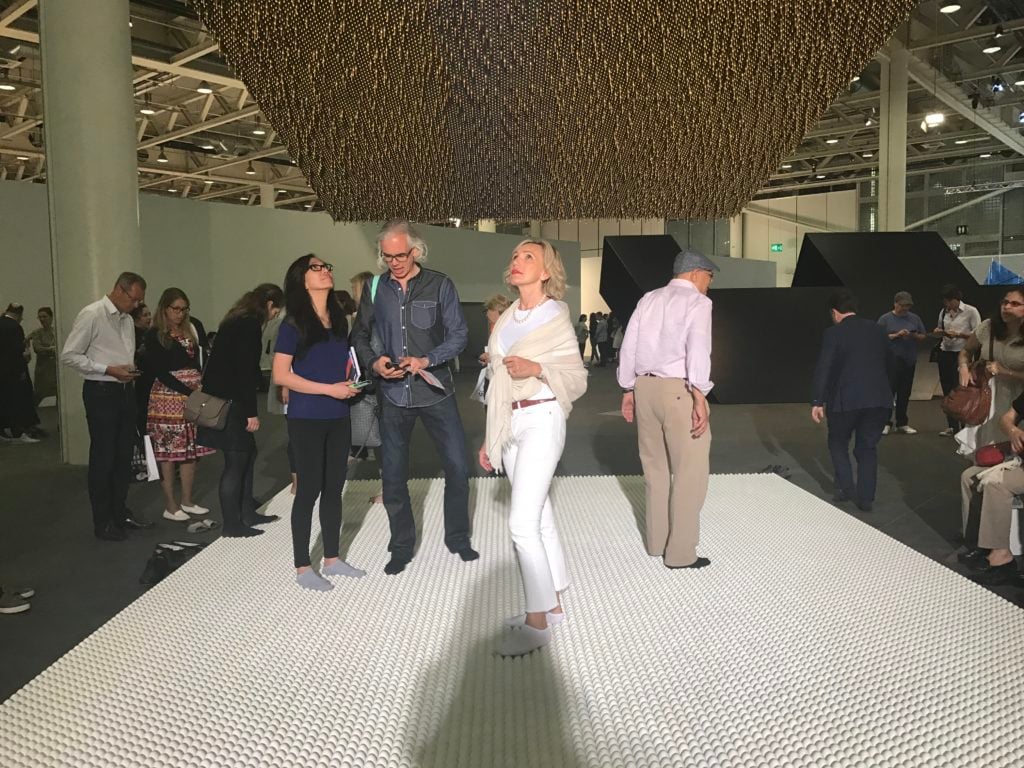
Meireles’s installation might win the Unlimited award for “Work That Looks the Most Like Lighthearted Instagram Bait Until You Read the Wall Label and Realize Just How Wrong You Were.” On closer inspection, the work reveals itself to be a tension-filled, even threatening twist on the American flag. That glittering gold ceiling, tilted at 45 degrees, is comprised of 40,000 hollow gold bullets set against a blue background. The floor is carpeted with 20,000 wooden white eggs carefully lined up across a red platform. The Brazilian artist conceived the work for a quincentennial exhibition on the discovery of America by Christopher Columbus in 1492, but it wasn’t produced until 2013, for his exhibition at the Reina Sofía in Madrid. The three ‘k’s in its title refer to the Klu Klux Klan.
YURI ANCARANI
The Challenge (2016)
Zero…
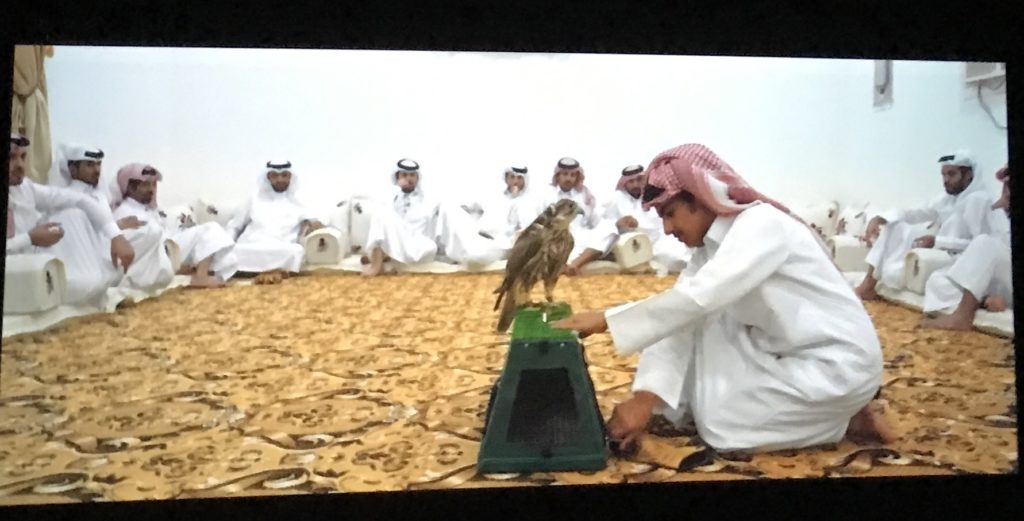
To make this film, the Italian artist Yuri Ancarani spent three years in Qatar immersing himself in the world of competitive falconry, a medieval pastime that denizens of the Persian Gulf have revved up with the addition of high-octane vehicles, homing devices, and other technological enhancements. If you’ve ever wondered what people (read: exclusively young men) do for fun in Qatar, the island nation now at the heart of a global terrorism-funding flareup, this film provides tantalizing clues with—in addition to footage of falconry, sometimes filmed as if through the eyes of the bird—scenes of motorcycle gangs praying on a red carpet in the desert, a pet owner showing off his beautiful predatory animals, and men gathered on a dune to watch souped-up trucks compete to carve up huge waves of sand in a sport that looks amazingly like surfing.
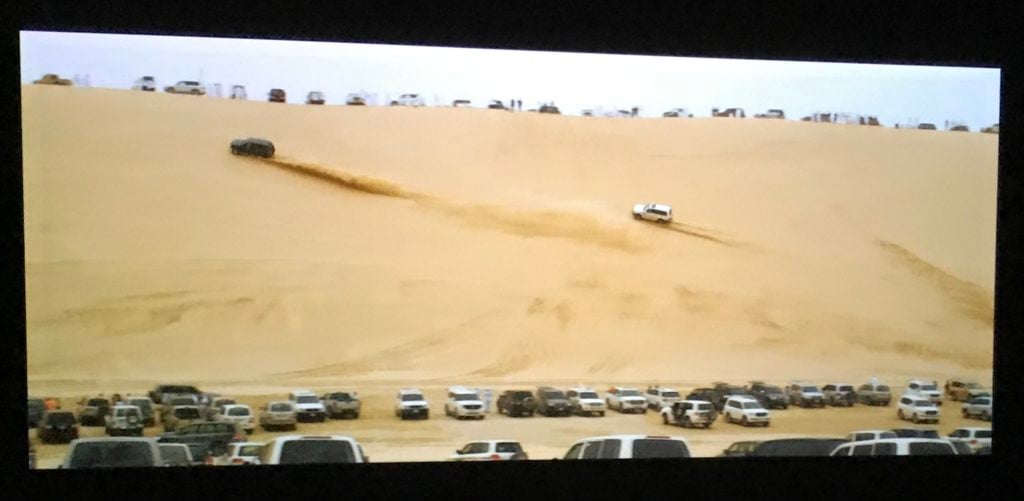
Art Basel in Basel is open to the public from June 15 – 18, 2017.